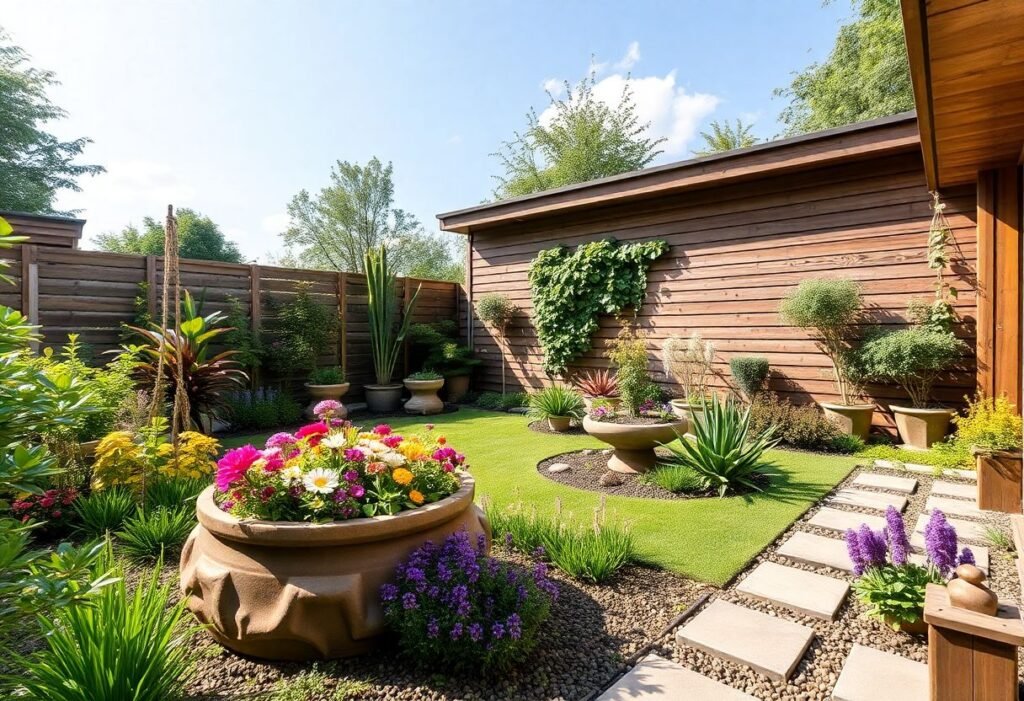What Are Sensory Gardens?
Sensory gardens are more than just a collection of plants; they are immersive environments that allow us to experience nature in a transformative way. With sensory garden ideas, you can design a space that promotes relaxation, mindfulness, and meditation. Ideal for spending quality time with family and friends, these gardens are gaining importance in our lives today.
Visual Elements: Vibrant Plants and Structures
The first step in creating a sensory garden is selecting plants with diverse shapes, colors, and sizes. Utilizing sensory garden ideas can lead to captivating displays. Choose flowers with bold colors like vibrant lilacs, fiery reds, and sunny yellows, alongside lush green plants that add harmony. Consider incorporating vertical structures such as trellises and arches to enhance the visual experience.
Sounds of Nature: Water Features and Birdsong
Nothing soothes the soul quite like the sounds of nature. Consider adding a stream or waterfall to your sensory garden. The soothing sound of running water enhances sensory experiences and attracts birds that will serenade your space. Be sure to include plants that rustle gently in the breeze, as these details enrich your sensory garden ideas.
Touch: Plants with Different Textures
The sense of touch plays a vital role in the sensory garden experience. Discover plants with varying textures, such as the velvety leaves of lamb’s ear, the rugged leaves of sage, and the delicate petals of flowers. By implementing sensory garden ideas, you can create a space where visitors can touch a variety of plants to feel their unique characteristics.
Taste: Growing Herbs and Fruits
Let’s not forget about taste! A sensory garden can be an excellent venue for growing herbs that can be used in the kitchen. Herbs such as basil, mint, and thyme are easy to cultivate and rich in flavor. Additionally, consider planting fruit-bearing shrubs that will not only provide delightful views but also delicious treats. Sensory garden ideas should encourage tastings and exploration of nature’s flavors.
Scents of the Garden: Fragrant Plants
Fragrance is another key element of a sensory garden. Plants like jasmine, lavender, and roses will introduce beautiful, inviting scents. When brainstorming sensory garden ideas, remember to place the most aromatic plants where they can be enjoyed the most, such as near seating areas.
Relaxation Zones: Places for Mindfulness
A sensory garden should not just be about plants; it’s also a relaxation zone. Create seating areas that allow you to enjoy the tranquility of your surroundings. Whether it’s a swinging bench or comfy outdoor chairs, ensure that these spaces are inviting and conducive to enjoying time outdoors. With sensory garden ideas, you can sculpt a little haven for meditation and reflection.
Conclusion
By combining all these elements, you can create your dream sensory garden. These spaces engage the senses and allow for a deeper connection with nature. Don’t hesitate to start planning your own sensory garden today and invite a touch of nature’s magic into your life.
Disclaimer
This text is for informational purposes and does not substitute for professional advice.

















